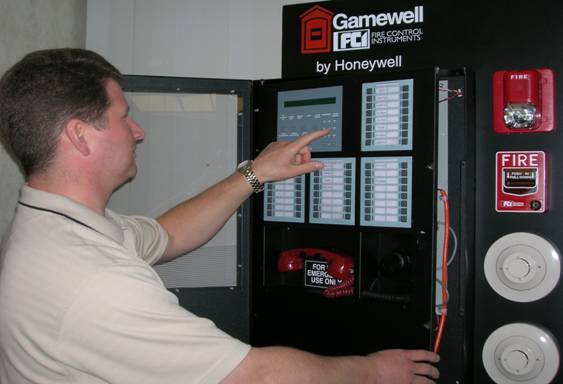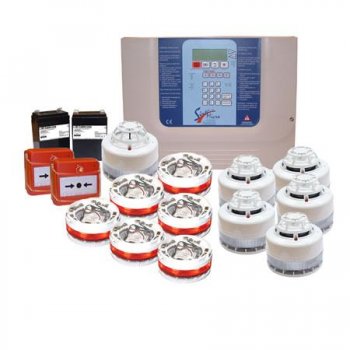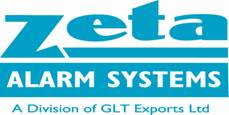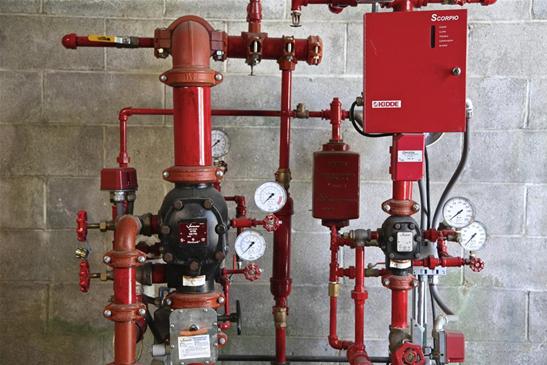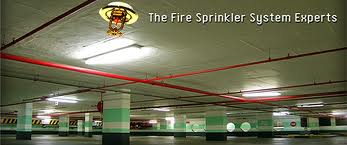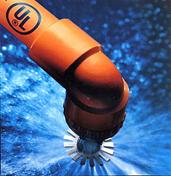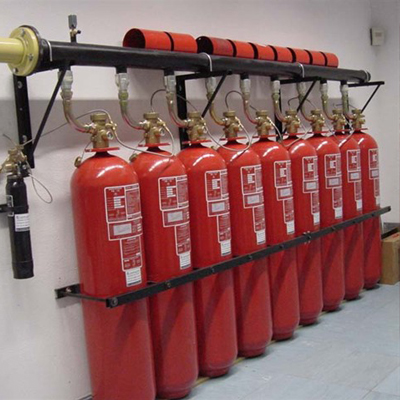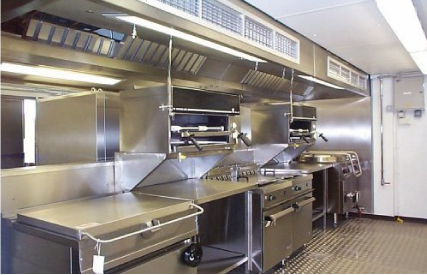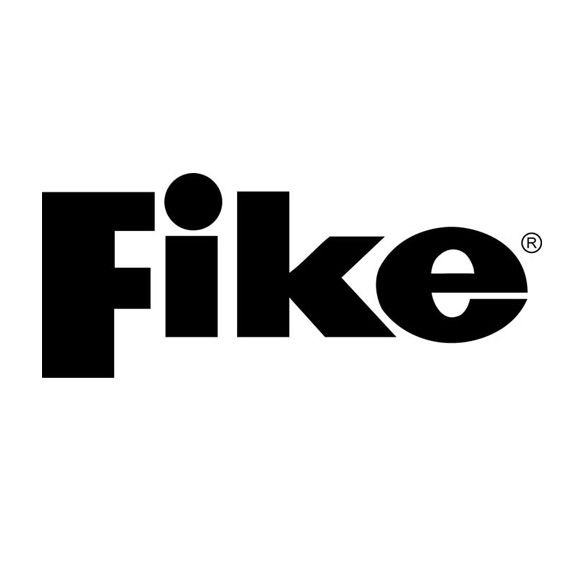Fire Alarm Systems
When it comes to fire safety, it is paramount to protect the very foundation of your business. American Fire Security employs the leaders in the fire protection industry to install a fire alarm system that meets local and national fire codes, providing safety and security for Ohio businesses throughout the state. Let us protect your foundation as well.
American Fire Security will work with you to design and custom-build the fire alarm system that best fits your needs. Whether it’s the size of your business, specific considerations for your industry or simply budget concerns, we can guarantee the right alarm system for your company.
- Fire Department Submittals
- New Construction Bids
- Required NFPA Inspections
- Fire Alarm Systems
- Professional Certified Fire Alarm Installation
- Fire alarm and life safety experts in state fire codes and local AHJ requirements.
- Company is properly licensed, bonded and insured.
- Systems meet all NFPA, FM and UL requirements
Conventional System Architecture
The philosophy of a conventional system revolves around dividing the building into a number of areas called zones. The detectors and callpoints within each zone are then wired on dedicated circuits. In the event of a detector or allpoint being triggered, the panel is able to identify which circuit contains the triggered device and thereby indicate which zone the fire alarm has come from. It is then necessary to manually search the indicated zone to pinpoint the exact cause of the fire alarm.
Because most conventional detectors are simple two state devices they can only be in either a normal or fire condition. Although modern components and good system design can go some way to reducing potential problems, it is not uncommon for conventional systems to generate unwanted alarms due to certain operating conditions or transient environmental conditions such as the presence of steam near to a smoke detector. A key development aimed at reducing such unwanted alarms has been the multi-criteria detector. Traditionally, detectors were designed to respond to
particular fire phenomena such as heat or the presence of smoke. However, Cooper now offer multi-criteria devices, which contain both a smoke sensing element and a thermal sensing element. The fire alarm decision is taken by analysis of the responses from both elements, resulting in improved detection performance as well as greatly enhanced false alarm suppression.
Sounder Circuits
In addition to the detection circuits, there is also a need for separate circuits of alarm annunciation devices such as sounders and beacons to signal the existence of a fire alarm condition to the building users. For sounder circuit continuity monitoring to function effectively, sounder circuits have to be wired in a single radial circuit, spurs and tees are not permitted. Almost every conventional fire panel will have facilities for more than one sounder circuit and generally the higher the specification of the panel or the higher the number of detection zones provided, the more sounder circuits will be provided.
Intelligent Addressable System Architecture
To enable the source of the alarm to be identified,each zone must be wired using a separate circuit, furthermore in the event of a fire alarm being triggered, the panel can only identify which zone contains the triggered device, it is then necessary to manually search the affected zone to discover the actual cause of the alarm.
Intelligent addressable systems overcome these limitations, each fire detecting sensor or callpoint is electronically coded with a unique identification or ’address’ which is programmed into the device during installation.
The control panel is then able to conduct two way communication with any of the addressable devices connected to the system by using the unique address number to define which device it wishes to communicate with. This operates in a similar manner to that of a telephone number enabling communication between specific telephones.
Under normal conditions the control panel continuously interrogates each device in sequence using a low power digitally pulsed signal, and analyses the reply to determine the status of the sensor or callpoint.
In this manner, the panel can ascertain whether each device is functioning correctly and also discover the amount of smoke or heat that the device is currently sensing.
This technology allows the panel to make intelligent decisions as to the appropriate action to take based on the information it receives from the individual sensors.
This has many advantages, for example very slow build up of apparent smoke density seen by a sensor can cause a warning or pre alarm condition to be triggered by the alarm panel prior to the situation becoming serious enough to warrant a full alarm.
A typical practical benefit of this technology is the situation whereby airborne dust particles enter smoke detectors and mimic the appearance of smoke, over time the concentration of dust can increase to a point where it can cause the detector to falsely trigger an alarm condition. With an intelligent addressable system, a pre alarm condition will normally be triggered rather than a full alarm giving the building operator the opportunity to clean or replace the sensor rather than suffer the disruption of an unwanted false alarm.
If whilst continually interrogating the smoke and heat sensors, the panel determines that the data gathered from a specific device is appropriate to instigate either a fire, fault or pre alarm condition, it uses the unique identifying number or address to determine which device is involved. Consequently the panel can pinpoint and identify precisely which device has triggered the fire, fault or pre alarm condition.
This level of sophistication removes the need for each zone of the building to be wired as a separate circuit.
For this reason intelligent addressable system components are typically connected to the panel using a small number of large loops thus greatly simplifying the installation of the system and reducing the installation cost.
Detectors instead of being simple two state devices now function as sensors continually communicating with the control panel and providing information regarding the temperature or concentration of smoke in their local environment.
Zone 2
Automatic Sprinkler Systems
Field’s Fire Protection knows that properly installed and maintained fire sprinkler systems play a significant role is reducing the number of fires and property damage. With dedicated engineers on staff, we can design, install, service and inspect a variety of sprinkler systems customized for your business.
We provide thorough testing and inspection, and provide detailed reporting for your records.
Automatic CO2 System
CO2 automatic fire extinguishing system is a kind of gas fire fighting system that is widely used at present. Its fire retardant is featured by low toxicity, no damage to the equipment, and excellent insulating property.
CO2 automatic fire extinguishing system can sharply reduce the temperature thanks to its dry ice.
CO2 fire extinguishing system is used to extinguish fires inside rooms contain adaptors, panels, fittings electrical connections.
It helps to extinguish fire by the sudden reduction of the temperature then removing oxygen gas from room and replace it with CO2 gas which spread out from cylinders connected to the room with other control panels which control the operation of the system automatically, heat smoke detectors to detect fire sprinklers to deploy the gas inside the room.
Automatic FM200 System
Fire FM200 is extremely safe to people and equipment. This system works by breaking fire triangle by offset Oxygen gas & flake its rate inside the secure room.
Since FM200 is a clean gaseous vapor, there is no messy cleanup of powder, foam or residue as itis a colorless gas which is liquefied under pressure for storage.
It is effective in the protection of data processing telecommunications and
electronic equipment as well as most flammable liquids and gases, and as such, electrical and mechanical systems not directly damaged by the fire can be used straight away.
Fire FM200 units are supplied as a complete and compact pre-engineered system that requires minimum fitting
Fire Fighting Networks
- Fire nets depend on water tanks, pumps using water pipes above under surface of the ground with different diameters according to the size seriousness of the project.
- All the industrial buildings, resorts, hotels other activities depend on the existence of networks installed with high technicality. Which include good variety of hydrants, hoses nozzles.
- fire nets contain hose reels inside manufacturing halls for the ease of use as it Characterized by using limited amounts of water don’t affect the building. Hose reels work at high water pressures are available in various diameters such as 3/4inch 1inch.
- Sheter supplies all components of the network with high quality implement under supervision of specialists in this field.
Kitchen Fire Suppression Systems Hood Cleaning
Field’s Fire Protection provides the design, installation, maintenance and inspections of all fire equipment for your restaurant kitchen systems. With a certified engineer on staff, we can provide upgrades if necessary, making sure you are UL 300 compliant.
Additional Services:
- Complete Ventilation Hood Cleaning (including exhaust fans and filters)
- Grease Containment
- Access Panels
As a distributor for major hood suppression systems, Field’s Fire Protection can offer competitive pricing, as well as professional system installation.


